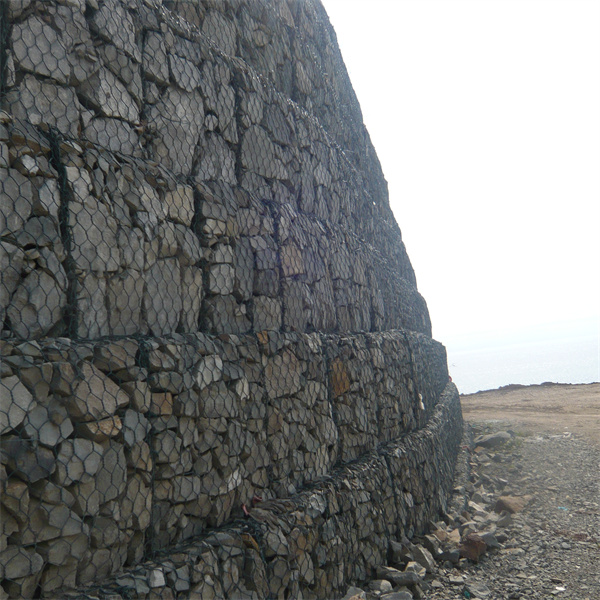Дек . 17, 2024 20:03 Back to list
Top DIY Ideas for Creating the Best Gabion Cages at Home
The Best Gabion Cages DIY A Guide for Homeowners
Gabion cages, also known as gabion walls or baskets, are an elegant and functional addition to landscaping and construction projects. They are essentially wire cages filled with stones, gravel, or other materials, and they serve a variety of purposes, including erosion control, decorative landscaping, and even structural support. If you’re looking to add a touch of rustic charm to your garden while also addressing practical concerns, building gabion cages yourself can be an immensely satisfying DIY project. In this article, we’ll explore the best practices, materials, and design ideas to help you create stunning gabion cages that enhance your outdoor space.
Understanding Gabion Cages
Before diving into the DIY aspect, it’s essential to understand what gabion cages are. These structures are typically constructed from galvanized steel wire or coated wire mesh, which provides durability and resistance to rust. They come in various sizes and shapes, making them versatile for different applications. The primary function of gabion cages is to retain soil and rocks, making them ideal for terracing, garden walls, or even seating areas.
Materials Needed
1. Gabion Wire Mesh Purchase high-quality galvanized wire mesh or welded wire for durability. Choose the size based on your project's scale. 2. Filling Material Choose stones or gravel that fits your aesthetic; options could include river rocks, granite, or limestone. The filling material is crucial for both stability and visual appeal. 3. Tools Gather essential tools such as gloves, wire cutters, pliers, a level, and a measuring tape. A shovel may also be useful if you need to dig for foundation or leveling. 4. Optional Add-Ons Consider using landscaping fabric to prevent soil from mixing with the filler material, or LED lights for a visually striking evening ambiance.
Designing Your Gabion Cage
The beauty of gabion cages lies in their adaptability. Here are a few design ideas to inspire your DIY project
1. Garden Edging Create low gabion walls that act as a border for flower beds or pathways. This not only helps keep soil in place but also adds an eye-catching detail to your landscape.
2. Seating Areas Build larger gabion cages filled with sturdy rocks to create seating benches in your garden. Pair them with wooden planks for added comfort.
3. Retaining Walls If you have sloped or uneven land, gabion cages can serve as retaining walls. They help stabilize soil and prevent erosion while maintaining aesthetic appeal.
4. Artistic Sculptures Unleash your creativity by creating free-form shapes or installations. Filling gabions with colorful stones can turn them into distinct art pieces.
best gabion cages diy

Step-by-Step Guide to Build Gabion Cages
1. Planning and Layout Decide on the size and purpose of your gabion cage. Use stakes and string to outline your intended area. 2. Cut the Wire Mesh Measure and cut the wire mesh according to your design. Ensure to wear gloves to protect your hands from sharp edges.
3. Assemble the Cage Using pliers, bend and twist the wire to create the shape of the cage, securing all corners tightly. Ensure the structure is stable and square.
4. Position the Cage If you’re building a retaining wall or garden feature, position the assembled cage in your desired location. Use a level to ensure it's even.
5. Fill the Cage Carefully fill the cage with your chosen stones or gravel. This part of the process is crucial—distribute the material evenly to maintain balance.
6. Seal It Up After filling, secure the top of the cage if necessary. You can leave it open for a more casual look or close it off to preserve the contents.
7. Finishing Touches Plant flowers or greenery around the base for a more natural blend. Add a light feature, if desired, to showcase your creation during the evenings.
Maintenance Tips
Gabion cages require minimal maintenance. Periodically check for any loose wires or shifting stones and refill as needed. Over time, you might want to refresh the landscaping around them to keep your outdoor space looking vibrant and lively.
Conclusion
Building gabion cages as a DIY project is a rewarding endeavor that allows you to enhance the functionality and aesthetics of your outdoor space. With the right materials and a bit of creativity, you can create stunning structures that serve multiple purposes—whether it be enhancing your garden’s beauty or preventing soil erosion. Embark on your gabion cage project today and enjoy the natural beauty that it brings to your home!
-
Visualizing Gabion 3D Integration in Urban Landscapes with Rendering
NewsJul.23,2025
-
The Design and Sustainability of Gabion Wire Mesh Panels
NewsJul.23,2025
-
The Acoustic Performance of Gabion Sound Barriers in Urban Environments
NewsJul.23,2025
-
Mastering the Installation of Galvanized Gabion Structures
NewsJul.23,2025
-
Gabion Boxes: Pioneering Sustainable Infrastructure Across the Globe
NewsJul.23,2025
-
Custom PVC Coated Gabion Boxes for Aesthetic Excellence
NewsJul.23,2025
-
Installation Tips for Gabion Wire Baskets in Erosion Control Projects
NewsJul.21,2025






